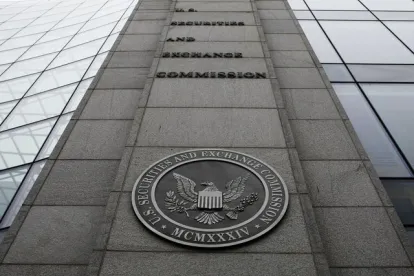I. EXECUTIVE SUMMARY
On 15 December 2021, the Securities and Exchange Commission (the SEC) proposed amendments to Rule 2a-7 under the Investment Company Act of 1940, as amended (the 1940 Act) (the Proposed Rule), which governs the structure and operation of money market funds (MMFs). The Proposed Rule would impact all MMFs with tax-exempt and prime MMFs being most affected. The amendments reflect the SEC’s concern over market stresses experienced in response to the COVID-19 Pandemic in March 2020 and are intended to improve the resiliency and transparency of MMFs.
Significantly, if adopted as proposed, the Proposed Rule would:
-
Increase the minimum daily and weekly liquidity requirements to provide a larger buffer in the event of rapid redemptions;
-
Remove the ability of, or requirements on, MMFs to impose liquidity fees and redemption gates when they fall below certain liquidity thresholds;
-
Require certain MMFs to implement swing pricing so that redeeming investors bear the liquidity costs of their redemptions;
-
Require stable net asset value (NAV) MMFs to convert to a floating share price if future market conditions result in negative fund yields;
-
Prohibit MMFs from operating a reverse distribution mechanism, routine reverse stock split, or other device that would periodically reduce the number of the fund’s outstanding shares to maintain a stable share price;
-
Require that MMFs calculate weighted average maturity (WAM) and weighted average life (WAL) based on the percentage of each security’s market value in the portfolio;
-
Amend stress testing and board reporting requirements; and
-
Amend Forms N-CR and N-MFP to improve the availability of information about MMFs, as well as make certain conforming changes to Form N-1A to reflect the proposed changes to the regulatory framework.
II. PROPOSED RULE 2A-7 AMENDMENTS
a. Amendments to Portfolio Liquidity Requirements
Currently, Rule 2a-7 requires that immediately after acquisition of an asset, a money market fund must hold at least 10% of its total assets in daily liquid assets and at least 30% of its total assets in weekly liquid assets.1 The Proposed Rule would increase daily and weekly liquid asset requirements to 25% and 50%, respectively. The SEC noted that these thresholds are proposed based on an analysis of the level of liquid assets needed to meet redemptions, based on redemptions in March 2020. The increased thresholds are intended to provide a greater buffer for MMFs to meet larger and more frequent redemptions.
In addition, the Proposed Rule would require each MMF to notify its board of any “liquidity threshold event,” which is defined as an event in which the fund has invested less than 25% of its total assets in weekly liquid assets or less than 12.5% of its total assets in daily liquid assets. These notification thresholds, as proposed, have been established at half of the daily and weekly liquid asset minimums, which the SEC believes represent a significant decrease in liquidity. As discussed more below, a liquidity threshold event will also require the filing of a Form N-CR. This notification requirement is designed to facilitate board monitoring and engagement when a fund’s liquidity levels fall significantly below the minimum requirements.
b. Removing Liquidity Fee and Redemption Gate Provisions
Rule 2a-7 currently requires that non-government MMFs adopt procedures that would allow the fund to impose a liquidity fee of up to 2% or temporarily suspend redemptions for up to 10 business days (i.e., impose a “gate”) if the fund’s weekly liquid assets fall below 30% of its total assets and the fund’s board of directors determines that imposing a fee or gate is in the fund’s best interests. Further, pursuant to Rule 2a-7, non-government MMFs must impose a 1% liquidity fee on redemptions if their weekly liquid assets fall below 10%, unless the fund’s board determines that such fee would not be in the fund’s best interest. Initially adopted as part of the 2014 money market fund reforms, these provisions were originally designed both to provide a cooling off period in times of investor panic and to better allocate the cost of providing liquidity to redeeming investors.
The SEC noted that in March 2020, even though no MMF imposed a fee or gate, the possibility of their imposition appears to have altered both shareholder and fund behavior. Specifically, the SEC indicated that the possibility that redemption fees and gates might be imposed contributed to shareholders redeeming from MMFs early in order to avoid the risk that a fee or gate would be imposed if the shareholder waited. Simultaneously, MMF managers reacted to market pressure to avoid the imposition of fees or gates by maintaining weekly liquid asset levels above the thresholds. This was accomplished in part by selectively selling securities with longer maturities, rather than using shorter maturity assets to meet redemptions. In response to its request from comments prior to the release of these proposed amendments, the SEC received comments asserting that these sales may have led to losses for funds and their remaining investors and contributed to downward pricing pressure on the underlying securities.
The SEC further noted that Rule 22e-32 may serve as a more realistic alternative to the imposition of gates because it is unlikely that a Fund’s board will approve a gate in the absence of circumstances that are otherwise likely to result in a fund liquidation. Similarly, the SEC noted that Rule 22c-23 will continue to provide a route for MMFs to impose redemption fees to the extent that fund boards conclude that doing so is in the best interest of the fund’s investors. As a consequence, the SEC has concluded that the fee and gate provisions have increased risks to investors without the intended benefits and that Rules 22e-3 and 22c-2 provide reasonable alternatives for the functions previously served by the redemption fee and gates provisions of Rule 2a-7. Accordingly, the Proposed Rule would remove the fee and gate provisions from Rule 2a-7, which were controversial and the subject of widespread industry comment when first adopted and implemented as part of the 2014 money market fund reforms.
c. Swing Pricing Requirement
Trading activity associated with meeting redemptions may impose costs, including trading costs and costs of depleting a fund’s daily or weekly liquid assets. These costs currently are borne by the remaining investors in the fund, diluting these investors’ interests in the fund. The SEC stated that this can create incentives for shareholders to redeem quickly to avoid losses, particularly in times of market stress.
Swing pricing is a process of adjusting a fund’s current NAV such that the transaction price effectively passes on costs stemming from shareholder redemptions to redeeming shareholders.4 Swing pricing was first introduced for open-end funds, other than MMFs and exchange-traded funds, when Rule 22c-1(a)(3) was adopted in 2016 as part of the SEC’s implementation of the new Rule 22e-4 (the Liquidity Rule). The SEC now proposes to require institutional prime and institutional tax-exempt MMFs to adopt swing pricing policies and procedures to adjust a fund’s current NAV per share by a swing factor. These policies and procedures would have to be approved by a majority of the Fund’s independent directors and reviewed annually. The swing factor would be implemented by a board designated “swing pricing administrator” who must be reasonably segregated from the portfolio management of the MMF and make annual reports to the board.5
The swing factor would be required to be applied when the fund has net redemptions during a pricing period.6 The swing factor would reflect spread costs and certain other transaction costs of selling a vertical slice of the fund’s portfolio. If net redemptions exceed a market impact threshold during the pricing period, the swing factor would also include an estimate of market impact costs. In recognition of the difficulty of producing timely, good faith estimates of each of these costs, MMFs would be permitted to estimate costs and the market impact factor for each type of security with the same or substantially similar characteristics in the fund’s portfolio and apply those estimates to all securities of that type, rather than analyze each security separately. The swing factor would be capped at a 2% upper limit to avoid the creation of a de facto gate.
The SEC views the swing pricing requirement as being complementary to its increased liquidity requirements by requiring redeeming investors to pay the cost of redemptions. Similarly, the SEC indicated that it believes that swing pricing will help to address a fund’s potential reluctance to impose voluntary liquidity fees under Rule 22c-2 (discussed above) even when doing so might be beneficial to the fund.
d. Amendments Related to Potential Negative Interest Rates
i. Conversion to Floating NAV
The Proposed Rule also provides that government and retail MMFs must convert to a floating share price if future market conditions result in negative fund yields. The SEC noted that the Proposed Rule responds to the persistent low interest rate environment and the possibility of negative effective rates even if the Federal Reserve does not target a negative rate. The SEC expressed concern that, in a negative or near-zero rate environment, it could be difficult for MMFs to maintain a non-negative stable share price. Currently, under Rule 2a-7(c)(1)(i), government and retail MMFs may seek to maintain a stable share price by using amortized cost and/or penny-rounding methods. Under the Proposed Rule, however, a fund would only be permitted to adopt this strategy if the board believes that the stable share price continues to fairly reflect the fund’s market-based NAV per share. To the extent the board decides that, in light of a low or negative rate environment, use of amortized cost and/or penny-rounding methods is no longer resulting in a fair reflection of the Fund’s NAV, the fund must convert to a floating share price. Among other items, this would require that government and retail MMFs and their transfer agents and financial intermediaries have the capacity to redeem and sell securities at prices that do not correspond to a stable price per share.
ii. Reverse Distribution Mechanisms and Other Similar Methods
The SEC considered various industry proposed operational responses to negative interest rates, including the potential for stable NAV MMFs to adopt a “reverse distribution mechanism” in which a fund’s share price would remain stable in the event of negative yields with the fund covering the shortfall by reducing the total number of its outstanding shares. This would result in shareholders holding a decreasing number of fund shares over time instead of holding the same number of shares at a declining value. Reverse distribution mechanisms had previously been adopted by certain European MMFs before the European Commission determined the mechanism to be inconsistent with the 2016 EU money market fund regulations. Due to the potentially misleading or confusing nature of the reverse distribution mechanism, the SEC proposes to amend Rule 2a-7 to expressly prohibit MMFs from operating a reverse distribution mechanism, routine reverse stock split, or other device that would periodically reduce the number of the fund’s outstanding shares to maintain a stable share price. The SEC seeks comment on the proposed prohibition of the utilization of a reverse distribution mechanism and possible methods that stable NAV MMFs could seek to employ if interest rates were to turn negative.
e. Amendments to Specify the Calculation of Weighted Average Maturity (WAM) and Weighted Average Life (WAL)
The SEC proposes to amend Rule 2a-7(d)(1) to require that MMFs calculate WAM and WAL based on the percentage of each security’s market value in the portfolio. The SEC has found MMFs use different approaches when calculating WAM and WAL under the current definitions in the rule. For instance, a majority of MMFs calculate WAM and WAL based on the percentage of each security’s market value in the portfolio, while other MMFs base calculations on the amortized cost of each portfolio security. This discrepancy can create inconsistency in WAM and WAL calculations across funds, including in data reported to the Commission and provided on fund websites. Accordingly, the SEC proposes to require funds to use market value because all types of MMFs already determine the market values of their portfolio holdings for other purposes, while only certain MMFs use amortized cost for such purposes.
f. Amendments to Stress Testing Requirements
Rule 2a-7 currently requires MMFs to conduct periodic stress tests and report those tests to the board. These stress tests include a requirement that the fund shows an ability to maintain 10% of its net assets in weekly liquid securities in specified market conditions. The SEC now proposes to remove the 10% threshold in favor of a requirement that each fund determine the minimum level of liquidity it seeks to maintain during stress periods, identify that liquidity level in its written stress testing procedures, periodically test its ability to maintain such liquidity, and provide the fund’s board with a report on the results of the testing. In releasing this Proposed Rule, the SEC noted that funds would have the flexibility to determine the appropriate level of liquidity based on the unique characteristics of each fund, including the type of fund, investor characteristics, or investor concentration among other factors.
g. Amendments to Reporting Requirements
The Proposed Rule would amend certain reporting requirements on Forms N-CR and N-MFP to improve the availability of information about MMFs, as well as make certain conforming changes to Form N-1A to reflect the proposed changes to the regulatory framework.
i. Form N-CR
With respect to Form N-CR, by which MMFs are required to report specific material events, the SEC proposes that a money market fund file a report on Form N-CR when the fund falls below a specified liquidity threshold (i.e., the fund has invested less than 25% of its total assets in weekly liquid assets or less than 12.5% of its total assets in daily liquid assets). As currently required for reports on Form N-CR, the report of these liquidity threshold events would be required to be filed within one business day of the event and include the initial date of the liquidity event and the percentage of the fund’s total assets invested in both weekly liquid assets and daily liquid assets on the initial date of a liquidity threshold event. The fund must also include a brief description of the facts and circumstances leading to the liquidity threshold event but is permitted to include this narrative via amendment up to four business days after the initiation of the liquidity event. To the extent that a fund has persistent liquidity events across multiple days, only one filing would be required.
In Part C of Form N-CR, which generally covers the provision of financial support to a fund from an affiliated entity, the SEC further proposes disclosure of the fund’s purchase date of any asset that is ultimately purchased by an affiliate. The SEC notes that this disclosure may provide context and identification of fund support that occurs within a short period of time and highlight instances in which the risk profile of a particular security has declined rapidly.
The SEC also proposes to require funds to file Form N-CR reports in a custom eXtensible Markup Language (XML) - based structured data language. Further, the SEC proposes other amendments to improve the utility of reported information and to remove reporting requirements related to the imposition of liquidity fees and redemption gates under Rule 2a-7.
ii. Form N-MFP
With respect to Form N-MFP, by which MMFs file a monthly schedule of portfolio holdings, the SEC has proposed the following amendments:
-
Changes that would require all MMFs to disclose any beneficial owner of 5% or more of the shares of any class on a more frequent basis than the current annual requirement;
-
A requirement that non-government or retail MMFs provide information about the composition of their shareholders by type. The proposed item would require these funds to identify the percentage of shareholders within the following categories: non-financial corporation; pension plan; non-profit; state or municipal government entity (excluding governmental pension plans); registered investment company; private fund; depository institution and other banking institution; sovereign wealth fund; broker-dealer; insurance company; and other;
-
Proposed amendments to Part C would require the provision of information separately for the initial acquisition of a security and each separate additional lot of the security in order to assist the SEC in understanding how long a fund has held a given position and the maturity of the position when it was first acquired;
-
Addition of a new Part D to Form N-MFP, which would require information about the number of portfolio securities an institutional or retail prime MMF sold or disposed of during the reporting period. If adopted as proposed, this information would aid in the monitoring of prime MMFs’ liquidity management, as well as their secondary market activities in normal and stress periods, and improve the availability of data about how selling activity by MMFs relates to broader trends in short-term funding markets;
-
Standardize the current repurchase agreement reporting section to require disclosure of the name of the counterparty, whether a repurchase agreement is centrally cleared and the name of the central clearing counterparty, whether the repurchase agreement was settled on a triparty platform, and the CUSIP of the securities involved in the repurchase agreement;
-
Collapse the “Treasury”, “Government/Agency”, and “Exempt Government” categories of MMFs into a single category of “Government.” A new section will require government MMFs to disclose whether they typically invest at least 80% of the value of their assets in Treasuries or repurchase agreements collateralized by Treasuries;
-
Require each fund to provide daily liquidity, NAV, and flow data for each business day of the month, rather than on a weekly basis, in order to allow Commission staff to better and more precisely monitor risks and trends in these areas and to provide industry-wide daily data in a central repository as a resource for investors and others;
-
Require funds to report 7-day gross yields (at the series level) and 7-day net yields (at the share class level) each business day instead of the current end of the reporting period requirement. The SEC noted that the higher-frequency reporting would assist in the timely monitoring and assessment of fund risks, particularly during periods of market stress;
-
Limit the required disclosure of reimbursement and/or waiver of operating expenses or management fees to the disclosure of the amount of any waiver or reimbursement during the period. Currently, funds are required to provide the name of any person who paid for or waived any part of the fund’s operating expenses or management fees during the reporting period and a description of the amount and nature of the fee and expense waiver or reimbursement;
-
Under the current section where funds are required to disclose a category of instrument for each portfolio security, add a new category that distinguishes between U.S. Government agency notes that are coupon-paying and those that are no-coupon discount notes in order to allow the SEC to better understand which notes constitute weekly liquid assets;
-
Add a new item that would require MMFs to indicate whether the fund is established as a cash management vehicle for affiliated funds and accounts;
-
Add a check box for funds to indicate whether they seek to maintain a stable share price; and
-
As part of the proposed swing pricing requirement, require floating NAV MMFs to report the number of times the fund applied a swing factor over the course of the reporting period, and each swing factor applied.
iii. Form N-1A
Because institutional MMFs would be required to implement swing pricing policies, they will be required to comply with the swing pricing requirements of Form N-1A. This will require funds to explain the fund’s use of swing pricing, including its meaning, the circumstances under which the fund will use it, and the effects of swing pricing on the fund and investors. With the adoption of the swing pricing requirements and the elimination of liquidity fees and redemption gates, the Proposed Rule would also amend Form N-1A to update the Rule 482 risk narrative with respect to each category of MMF, which was first adopted as part of the 2014 money market fund reforms. For additional detail regarding the proposed revisions to the Rule 482 disclosures, which are included in each MMF's prospectus and certain other marketing materials, please see the "Comparison Chart" below.
III. PROPOSED COMPLIANCE DATES
If adopted as proposed, the SEC proposes to remove the fees and gates provisions of Rule 2a-7 as well associated disclosure requirements in Form N-1A and N-CR, effective immediately as of the effective date of the Proposed Rule.
The SEC proposes that as of six months following the effective date of the Proposed Rule, funds must meet all other aspects of the Proposed Rule, including but not limited to the proposed increased daily minimum asset and weekly minimum asset requirements and the amendments to Forms N-CR and N-MFP, with the exception of the proposed swing pricing provisions, which would be required to be implemented within 12 months from the effective date of the amendment, if adopted.
IV. REQUESTS FOR COMMENT
The Proposed Rule will be published on SEC.gov and in the Federal Register. The comment period will remain open for 60 days after publication in the Federal Register. Additional details regarding the specifically requested comments will be covered in a future series of K&L Gates client alerts.
V. COMPARISON CHART
Please click here to view the Comparison Chart.
1 Assets that make up daily liquid assets and weekly liquid assets are cash or securities that can readily be converted to cash within one business day or five business days, respectively.
2 Rule 22e-3 generally allows a MMF to suspend redemptions if, among other conditions: (i) the fund, at the end of a business day, has invested less than 10% of its total assets in weekly liquid assets or, in the case of a government or retail MMF, the fund’s price per share has deviated from its stable price (i.e., it has “broken the buck”) or the fund’s board determines that such a deviation is likely to occur, and (ii) the fund’s board has approved the fund’s liquidation.
3 Rule 22c-2 provides that an open-end fund may impose a redemption fee, not to exceed 2% of the value of the shares redeemed, upon the determination by the fund’s board of directors that such fee is “necessary or appropriate to recoup for the fund the costs it may incur as a result of those redemptions or to otherwise eliminate or reduce so far as practicable any dilution of the value of the outstanding securities issued by the fund”.
4 Note that the SEC is not proposing to impose swing pricing requirements on government MMFs, retail prime MMFs, or retail tax-exempt MMFs because those funds are permitted to maintain a stable NAV.
5 The swing administrator’s annual report to the board would be required to include: (i) the administrator’s review of the adequacy of the fund’s swing pricing policies and procedures and the effectiveness of their implementation; (ii) any material changes to the fund’s swing pricing policies and procedures since the date of the last report; and (iii) the administrator’s review and assessment of the fund’s swing factors and market impact threshold, including the information and data supporting the determination of the swing factors and the swing pricing administrator’s determination to use a smaller market impact threshold, if applicable.
6 “Pricing period” is defined in substance to mean the period of time in which an order to purchase or sell securities issued by the fund must be received to be priced at the next computed NAV.
Wil Dietz also contributed to this article.






 />i
/>i
